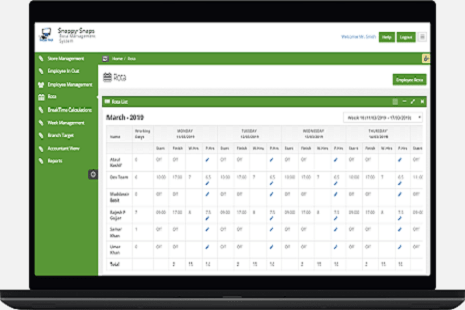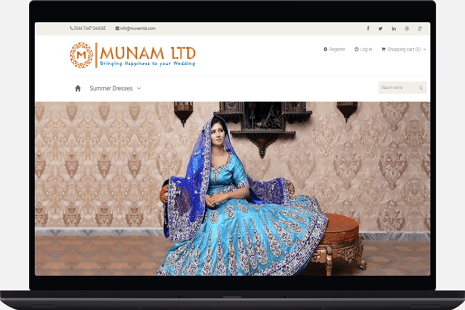ASP.NET MVC
What is a ASP.NET MVC ?
Model–View–Controller is an architectural pattern commonly used for developing user interfaces that divides an application into three interconnected parts. This is done to separate internal representations of information from the ways information is presented to and accepted from the user.
The whole idea behind using the Model View Controller design pattern is that you maintain a separation of concerns. Your controller is no longer encumbered with a lot of ties to the ASP.NET runtime or ties to the ASPX page, which is very hard to test. You now just have a class with regular methods on it that you can invoke in unit tests to find out if that controller is going to behave correctly.
The Model-View-Controller (MVC) is an architectural pattern that separates an application into three main logical components: the model, the view, and the controller. Each of these components are built to handle specific development aspects of an application. MVC is one of the most frequently used industry-standard web development framework to create scalable and extensible projects.
Another design goal for ASP.NET MVC was to be extensible throughout all aspects of the framework. So when we talk about views, views have to be rendered by a particular type of view engine. The default view engine is still something that can take an ASPX file. But if you don't like using ASPX files, you can use something else and plug in your own view engine. There is a component inside the MVC framework that will instantiate your controllers. You might not like the way that the MVC framework instantiates your controller, you might want to handle that job yourself. So, there are lots of places in MVC where you can inject your own custom logic to handle tasks.
ASP.NET supports three major development models: Web Pages, Web Forms and MVC (Model View Controller). ASP.NET MVC framework is a lightweight, highly testable presentation framework that is integrated with the existing ASP.NET features, such as master pages, authentication, etc. Within .NET, this framework is defined in the System.Web.Mvc assembly. The latest version of the MVC Framework is 5.0. We use Visual Studio to create ASP.NET MVC applications which can be added as a template in Visual Studio.
The MVC design pattern decouples these major components allowing for efficient code reuse and parallel development. Traditionally used for desktop graphical user interfaces (GUIs), this architecture has become popular for designing web applications and even mobile, desktop and other clients.
MVC/MVVM is not an either/or choice. The two patterns crop up, in different ways, in both ASP.Net and Silverlight/WPF development. For ASP.Net, MVVM is used to two-way bind data within views. ... MVC on the other hand is a way of separating concerns on the server-side.
ASP.NET Core Features You Need to Know :
- Asynchronous via async/await
- Unified MVC & Web API frameworks
- Multiple environments and development mode
- Dependency Injection
- WebSockets & SignalR
ASP.NET MVC Features:
- Ideal for developing complex but lightweight applications.
- Provides an extensible and pluggable framework, which can be easily replaced and customized. For example, if you do not wish to use the in-built Razor or ASPX View Engine, then you can use any other third-party view engines or even customize the existing ones.
- Utilizes the component-based design of the application by logically dividing it into Model, View, and Controller components. This enables the developers to manage the complexity of large-scale projects and work on individual components.
- MVC structure enhances the test-driven development and testability of the application, since all the components can be designed interface-based and tested using mock objects. Hence, ASP.NET MVC Framework is ideal for projects with large team of web developers.
- Supports all the existing vast ASP.NET functionalities, such as Authorization and Authentication, Master Pages, Data Binding, User Controls, Memberships, ASP.NET Routing, etc.
- Does not use the concept of View State (which is present in ASP.NET). This helps in building applications, which are lightweight and gives full control to the developers.
Our Projects in ASP.NET MVC DEVELOPMENT
We Have Satisfied Local And Global Various Clients, Here Is Successful Work Of SEO, Web Design, Web Development, Software Development Services.
Project Title
Lorem ipsum dolor sit amet, consectetur adipisicing elit. Adipisci accusamus accusantium.
Read MoreProject Title
Lorem ipsum dolor sit amet, consectetur adipisicing elit. Adipisci accusamus accusantium.
Read MoreProject Title
Lorem ipsum dolor sit amet, consectetur adipisicing elit. Adipisci accusamus accusantium.
Read MoreProject Title
Lorem ipsum dolor sit amet, consectetur adipisicing elit. Adipisci accusamus accusantium.
Read MoreProject Title
Lorem ipsum dolor sit amet, consectetur adipisicing elit. Adipisci accusamus accusantium.
Read MoreProject Title
Lorem ipsum dolor sit amet, consectetur adipisicing elit. Adipisci accusamus accusantium.
Read MoreProject Title
Lorem ipsum dolor sit amet, consectetur adipisicing elit. Adipisci accusamus accusantium.
Read MoreProject Title
Lorem ipsum dolor sit amet, consectetur adipisicing elit. Adipisci accusamus accusantium.
Read More






